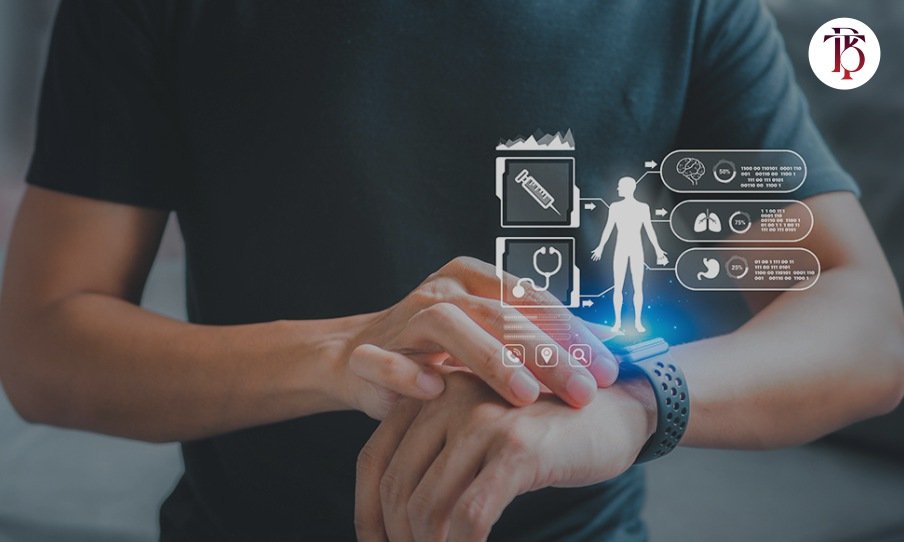Digital Health & Wellness: How Technology is Shaping Our Mental and Physical Health

Health connects body and mind. Technology connects people and data. Together, both create a new path: digital health and wellness. This path changes how we monitor, treat, and improve our mental and physical state. It changes not only hospitals and clinics but also homes, workplaces, and daily life.
The Rise of Digital Health
Digital health starts with tools. Tools like apps, wearables, and online platforms track and guide us. They bring health into our hands. Instead of waiting for illness, people act early. Instead of one annual check-up, people see daily progress. This shift is big. Health moves from reactive to proactive.
Wearables like smartwatches track steps, sleep, and heart rate. Apps guide meditation, diet, and exercise. Platforms connect patients with doctors online. These tools collect data, show patterns, and suggest action. The result: people know themselves better.
The Link Between Mind and Body
Health is not just body. Mind matters too. Stress, anxiety, and depression shape the body. Poor sleep, low energy, or unhealthy weight often connect back to the mind. Technology now sees this link. Wellness apps track mood, energy, and focus. Some use breathing exercises. Some use guided therapy. Others offer AI chat support.
This connection makes care holistic. A person who tracks heart rate can also track stress. A person who counts calories can also log feelings. Data shows the whole picture. Doctors and users see both sides, not just one.
Mental Health: Digital Tools at Work
Mental health once carried stigma. People feared judgment. Many stayed silent. Digital tools break that wall. They offer private spaces. They offer guided exercises, reminders, and even therapy chats.
Meditation apps like Calm or Headspace guide people to slow down. Journaling apps help people express thoughts. Therapy platforms connect patients with certified professionals online. AI tools act as first support. They listen, suggest, and comfort.
The benefit is access. Remote areas or busy cities no longer block help. People reach support anytime, anywhere. The phone becomes a safe space.
Physical Health: Tracking and Coaching
Physical health benefits too. Wearables and apps give real-time feedback. Instead of guessing, people see numbers. Instead of relying on memory, they view records.
Fitness apps suggest workouts. Nutrition apps plan meals. Sleep apps track patterns. Blood sugar monitors link with smartphones. Smart scales send weight data to dashboards. All these connect into one digital health map.
Doctors also benefit. They receive continuous data, not just snapshots. A patient shows blood pressure logs, not vague reports. This detail improves diagnosis and care.
Preventive Care Through Data
The biggest power of digital health lies in prevention. Data predicts risk. Early signs show up faster than symptoms. If a smartwatch notices irregular heartbeat, it alerts the user. If a sleep app detects long patterns of poor rest, it suggests action.
Hospitals adopt predictive analytics. They use big data to foresee outbreaks, track chronic conditions, and plan resources. For individuals, this means better safety and fewer surprises. Prevention costs less and saves more.
The Role of AI in Health and Wellness
AI plays a growing role. It studies large data sets, finds hidden links, and offers personal advice. AI-driven apps can adapt workouts, suggest diets, and track mental health. They learn from habits. They adjust as the user grows.
AI chatbots act as companions. They answer questions, remind users of medicine, and track mood shifts. Doctors use AI to read scans faster, detect diseases earlier, and manage records better. The partnership between human care and AI support grows stronger each year.
Challenges and Concerns
Digital health is powerful but not perfect. Concerns remain. Privacy tops the list. Health data is sensitive. People fear misuse or leaks. Strong rules and secure systems are needed.
Another concern is over-reliance. Too much trust in apps may harm. A smartwatch is not a doctor. AI cannot replace human empathy. Balance is key. Technology supports, but humans lead.
Access also matters. Not all people can afford smart devices. Not all regions have strong internet. This gap can widen inequality. To fix this, policies must ensure fair access and affordable tools.
The Future of Digital Wellness
The future looks integrated. Devices will connect more deeply. Data from wearables, apps, and clinics will merge. A single dashboard may show body, mind, and lifestyle in one view. Doctors will guide patients using complete pictures, not fragments.
Virtual reality may train people to handle stress. Augmented reality may guide exercises at home. Genetic data may link with daily apps for personalized diets and fitness. AI may spot health changes before humans notice them.
This future is not far. Some parts are already here. Others grow each year. The trend is clear: technology and wellness will stay linked.
Daily Life with Digital Health
Digital health is not only for patients. It touches daily life. Workers track stress to avoid burnout. Students use focus apps to learn better. Parents monitor kids’ sleep and screen time. Seniors wear fall-detection devices for safety.
Technology makes wellness part of routine, not a special task. Just as people brush teeth daily, they now track steps, log meals, or meditate online. Habits shift slowly but deeply.
Conclusion
Digital health and wellness reshape how we live. Tools connect body and mind. Data guides choices. AI offers support. The focus moves from treatment to prevention, from clinic to daily life.
Still, balance is needed. Technology cannot replace care, only enhance it. Privacy, access, and trust must stay central.
The journey has just begun. In the next decade, health and technology will merge even more. The goal stays simple: a healthier, happier, and more connected life.
